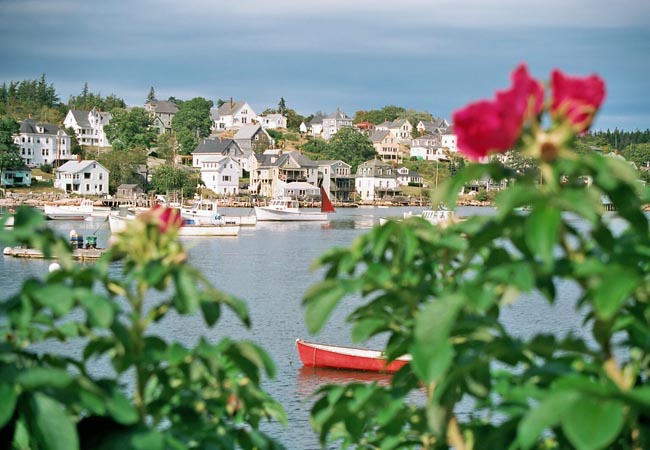|
Scenic USA - Maine Stonington Harbor |

| Photo by Merrill Miller |
When early European settlers arrived in Maine during the 17th century, many islands and coastal towns became hubs for maritime related industries. If the men weren't fishing or lobstering, they were employed in shipbuilding. One of many islands in Penobscot Bay, the history of Deer Island began a little differently. Settlers arrived on the north end of the island with the idea of farming in mind. Once the thin soil was depleted, island residents turned to the sea for their livelihood. It wasn't until the granite boom of 1870, when locals turned portions of their island home into a quarry. Relying on stone cutters from Italy, building stone was exported throughout America. The rose colored granite transformed this 10 square mile island in a busy seaport, and it was the stone industry that gave birth and a name to this island town.
Today the harbor in Stonington is just as important as it was in the 19th century, leading the state in pounds and dollar value of lobster. When the Atlantic wind kicks up, the calm harbor at Stonington is stacked up with commercial boats. Fishing and lobstering is an enduring way of life in New England, and despite the underwater obstacles this Deer Island haven remains a busy place. With quick access to bounty in the Atlantic, either through Penobscot Bay to the west or Jericho Bay to the east, Stonington remains an essential port.
Stonington harbor's dock space is limited, and some boaters choose to let their craft swing on an anchor or tie up to mooring buoys at Staple Point. Occasionally there is time to play and the big boys show off the raw power of their vessels in the lobster boat races. Whether it's picturesque scenery, a seafood feast or a charter fishing trip, Stonington is a great place to witness Maine's island life.
Area Map

|
Other Area Attractions |
|
Copyright © 2024 Benjamin Prepelka
All Rights Reserved
